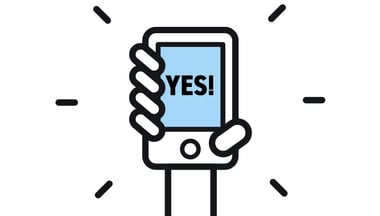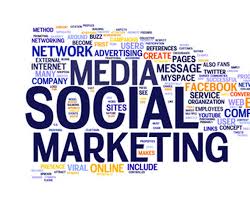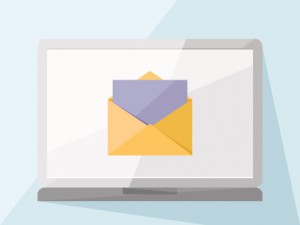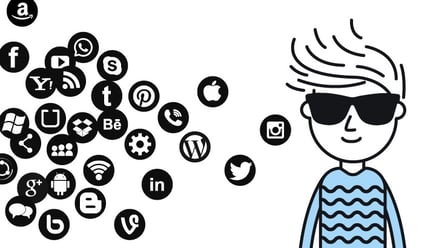If you’re a freelancer, it’s likely that the majority of your client communications will be by email. The bad news is that an email inbox can get cluttered fairly quickly, which might make your important client communication slide to the bottom of the list.
When you consider that the email spam rate is high — globally, the percentage of spam in total email traffic averages 60% or more — you start to realize how easy it can be to get lost in the mix. Fortunately, there’s an art to creating client email communications that can help your messages stand out.
We've all been a victim of classic email annoyances, so much that Tripp and Tyler needed to make a hilarious video parody:
So we’ve assembled our favorite do's and don’ts, tips and tricks, for your next set of emails, whether they’re to a client, coworker, or friend.
Don’t Do This, Do That: Email Edition
/Pros_Cons(alt).jpg?width=720&name=Pros_Cons(alt).jpg)
On average, office employees receive 80 emails a day. Email is a communications tool that can be overused. Fortunately, there are instant message portals like Slack and Basecamp that were designed to lessen the burden of emailing, while giving remote employees a way to communicate, but it's likely that you’ve been using email so frequently that you’re not giving a lot of thought to how you use it.
Don’t: Use email for every communication
Seriously. If you’re trying to collaborate on a document with a client, is there a better way? Online document platforms like Dropbox, Microsoft 365, or Google Docs allow collaboration and communication without emailing. That said, if you’re sharing bad news or sending an email on a sensitive subject — be like a sales pro and pick up the phone. Remember that all the smiley face emoticons in the world cannot impart the tone of verbal communication.
Do: Spellcheck
Run any client communications through a free online spellchecker like Grammarly. You will come off as careless and/or less intelligent if you don’t slow down and take time to double-check for spelling and grammatical mistakes.
Don’t: Write way too many words to say something that you could have said in less words
See what we mean? Do: Be brief. In the same way that you would edit unnecessary words from any written document, make sure your emails aren’t excessively wordy. It’s always better to be concise. You can even use line spacing between sentences to make the email more readable.
Do: Think up a snazzy subject
Use the subject line to get your client’s attention. A concise, specific subject line will help the receiver prioritize what to respond to. For example, which email subject line is better?
-
Subject: Meeting
-
Subject: Contract document attached for Tuesday’s meeting — please review
Don’t: Send emails when you're emotional
Never send an emotional email. That’s why there is a “drafts” folder. Recognize that tone is a real thing in email communications, and it can easily be misconstrued. If you’re upset, write it out, but leave it in drafts while you go cool off. Come back later when you have more perspective.
Which leads us to our next point...
Do: Put the sender email address in last
To avoid those horrifying "oops! Sent to early" emails, always leave the "To:" field blank. Put the recipient's email address in after you've reread and spellchecked your email. If you're using Gmail, we recommend implementing that fancy "delay send" option to give yourself a little more time to "undo" — just in case.
Other Professional Email Etiquette Tips to Keep in Mind:
- Get to the point
The email etiquette experts at Purdue’s Online Writing Lab insist on a brief, meaningful subject line that tells your contact what the email is about. This saves the recipient time, which makes you look thoughtful. - Address your recipient politely and properly
A “Dear Sir or Madam” or “Dear Dr. Smith” or “Dear Ms. Jones” is appropriate. "Yo" is probably not. - Use good grammar, capitalization, punctuation, and spelling
Use the spellchecker and reread your email a couple of times to weed out any typos. - Close politely and gratefully
Thank them for their time and end with the classic "Sincerely," "Best Regards," or a simple "Thank You."
Email Etiquette Faux Pas
/email.jpg?width=720&name=email.jpg)
Here's a quick email etiquette refresher. Make sure to avoid using these common mistakes when you're communicating with clients or coworkers.
- ALL CAPS
It comes across as SHOUTING, which is as rude in an email as it is in person. If you need to emphasize something, use bold or italicized lettering instead. - Fancy Nonsense
Freelance graphic design job seekers are sometimes tempted to play with backgrounds, graphics, and typography in emails. Instead, use a simple, readable font and a clear background to save your recipient download time and inbox space — think mobile-friendly first! - Excessive Punctuation
One exclamation point is usually quite enough! Also, check the ends of all of your sentences to make sure they don't all end with an exclamation point. If everything is important, nothing is. - Abbreviations and Slang
Unless you are 100% sure your recipient knows your lingo, spell out what you mean. Not only might the person on the other end not get what “MTFBWU” means, they might find certain abbreviations offensive or inappropriate. - Emojis
Charlie Osborne of ZDNet recommends avoiding emojis until your contact uses them. Even then, go light on the smileys — never more than one or two in an email. 😁
Ready, Set, Send!
Hopefully, you feel better about sending off that client e-communication now! Need a client to converse with? Let Artisan help with that!




